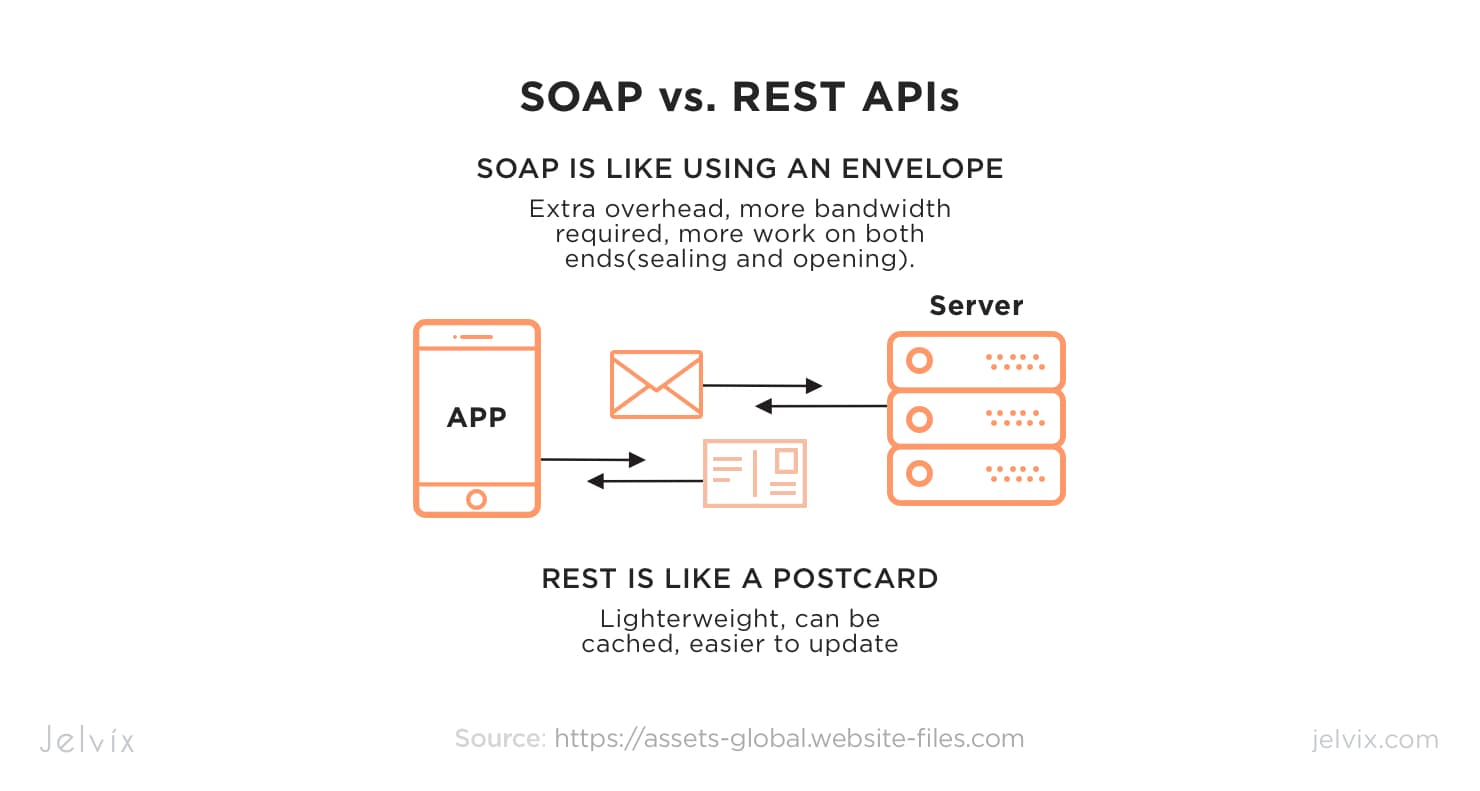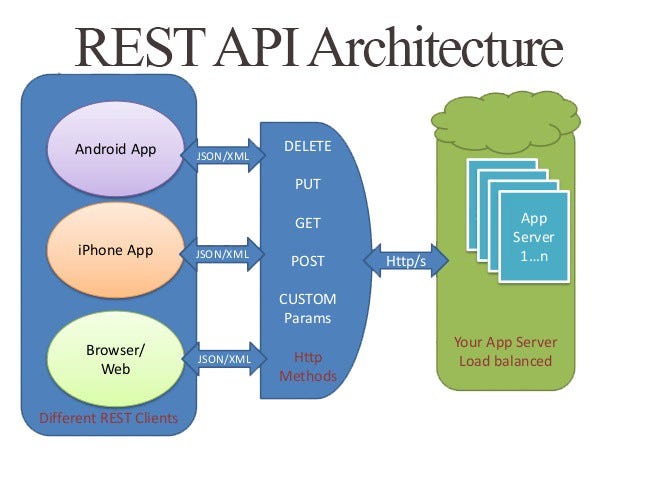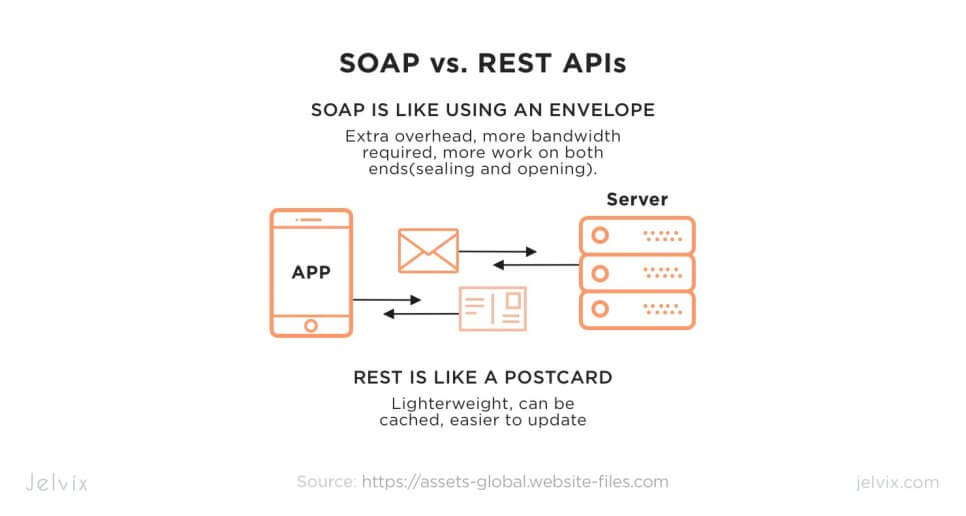Understanding APIs: A Necessary Prerequisite
APIs, or Application Programming Interfaces, have become an indispensable part of modern software development. They serve as the connective tissue that enables different software applications to communicate and share data with one another. Among the various types of APIs available, Soap and Rest APIs are two of the most widely used. Before delving into the specifics of Soap and Rest APIs, it’s essential to understand the fundamental concepts and importance of APIs in today’s interconnected digital landscape.
Soap APIs: A Deep Dive
Soap (Simple Object Access Protocol) APIs are a type of web service that enables communication between different software applications. Soap APIs use an XML (eXtensible Markup Language) format for data transmission and rely on standard protocols such as HTTP, SMTP, and TCP. Soap APIs are designed to be platform-independent and language-agnostic, allowing developers to build interoperable solutions that can communicate across various operating systems and programming languages.
Soap APIs offer several benefits, including their robustness, security, and ability to handle complex data types and large payloads. They also provide built-in error-handling mechanisms and support for various messaging patterns, such as request-response and document-literal. However, Soap APIs can be more resource-intensive and slower than their Rest counterparts due to the verbosity of XML and the additional processing required to parse and validate messages.
Popular Soap APIs include the Federal Reserve’s FedLine Web Services, which facilitate financial transactions between banks and financial institutions, and the European Space Agency’s (ESA) Soap-based interface for accessing satellite data. Soap APIs are often preferred in scenarios where security, reliability, and data integrity are paramount, such as in financial services, healthcare, and government applications.
Rest APIs: Key Concepts and Applications
REST (Representational State Transfer) APIs are a type of web service that leverages HTTP (Hypertext Transfer Protocol) to facilitate communication between different software applications. Unlike Soap APIs, Rest APIs rely on a lightweight data format, typically JSON (JavaScript Object Notation), and support a range of HTTP methods, such as GET, POST, PUT, PATCH, and DELETE. Rest APIs are designed to be stateless, meaning that each request contains all the necessary information to complete the request, and the server does not maintain any client context between requests.
Rest APIs offer several advantages over Soap APIs, including their simplicity, performance, and flexibility. They are generally easier to implement, maintain, and consume due to their lightweight data format and support for various HTTP methods. Rest APIs can also handle a wide range of data types, from simple key-value pairs to complex nested objects, and are well-suited for building scalable, distributed systems that can handle high volumes of concurrent requests.
Popular Rest APIs include the Twitter API, which enables developers to build applications that interact with Twitter’s data and services, and the Google Maps API, which provides location-based services and mapping functionality for web and mobile applications. Rest APIs are often preferred in scenarios where performance, scalability, and ease of integration are critical, such as in social media, e-commerce, and IoT (Internet of Things) applications.
How to Choose Between Soap and Rest APIs
Selecting the appropriate API for a specific project or application depends on various factors, including data format, security, performance, and ease of implementation. By carefully evaluating these factors, developers can make informed decisions that lead to successful and efficient API integrations.
One key consideration is the data format. Soap APIs use XML, which is more verbose and resource-intensive than the JSON format used by Rest APIs. However, XML offers advantages such as built-in schema validation and support for advanced data types. Developers should choose the data format that best aligns with their project requirements and the capabilities of their target platforms.
Security is another critical factor. Soap APIs provide built-in security features, such as WS-Security, which enable message-level encryption, digital signatures, and access control. Rest APIs, on the other hand, typically rely on HTTPS for secure data transmission and leverage additional security mechanisms such as JSON Web Tokens (JWT) and OAuth for authentication and authorization. Developers should select the API that offers the required security features and aligns with their organization’s security policies.
Performance is also an essential consideration. Rest APIs generally have lower overhead and are faster than Soap APIs due to their lightweight data format and support for various HTTP methods. However, Soap APIs offer advantages such as built-in error handling and support for complex data types and large payloads. Developers should choose the API that offers the best balance between performance, functionality, and resource utilization.
Lastly, ease of implementation plays a significant role in API selection. Rest APIs are generally easier to implement, maintain, and consume due to their simplicity, support for various HTTP methods, and widespread adoption across different platforms and programming languages. Soap APIs, while more complex, offer advanced features and are well-suited for specific use cases, such as enterprise integration and legacy system modernization. Developers should choose the API that offers the best balance between functionality, ease of implementation, and long-term maintainability.
Implementing Soap and Rest APIs: Best Practices
When implementing Soap and Rest APIs, developers should adhere to best practices to ensure successful integration, maintainability, and long-term viability. These best practices cover various aspects, including versioning, error handling, documentation, and testing.
Versioning
Versioning is crucial when implementing APIs, as it allows developers to maintain backward compatibility and manage changes to the API over time. Developers should include a version number in the API URL or request header and ensure that changes to the API are backward-compatible whenever possible. This approach minimizes disruptions to existing integrations and enables a smooth transition to new API versions.
Error Handling
Error handling is an essential aspect of API implementation. Developers should define clear error messages and status codes for various error scenarios, ensuring that clients can easily understand and respond to errors. Implementing comprehensive error handling also helps improve the reliability and robustness of the API, reducing the likelihood of unexpected issues or downtime.
Documentation
Proper documentation is vital for ensuring that developers can effectively use and integrate APIs into their applications. Developers should provide clear, concise, and up-to-date documentation, including API reference guides, tutorials, and sample code. Utilizing tools such as Swagger or OpenAPI can help automate the documentation process and ensure that the documentation remains consistent and accurate.
Testing
Thorough testing is critical for ensuring the reliability and performance of APIs. Developers should implement various testing strategies, including unit tests, integration tests, and load tests, to validate the functionality, compatibility, and scalability of the API. Utilizing testing frameworks such as Postman, SoapUI, or Rest-Assured can help streamline the testing process and ensure that the API meets the desired quality standards.
By following these best practices, developers can ensure that their Soap and Rest API implementations are robust, maintainable, and well-suited for their intended use cases. Real-world examples and case studies can provide valuable insights into how these best practices have been successfully applied in various scenarios, helping developers make informed decisions and avoid common pitfalls.
The Future of Soap and Rest APIs: Trends and Predictions
As the API landscape continues to evolve, new technologies and trends are emerging that could significantly impact the way developers build and consume Soap and Rest APIs. Among these are GraphQL, gRPC, and WebAssembly, which promise to address some of the limitations and challenges associated with traditional API architectures.
GraphQL
GraphQL is an open-source query language and runtime for APIs that enables clients to define the structure of the data they need, resulting in more efficient and flexible API interactions. By allowing clients to request only the data they require, GraphQL can help reduce over-fetching and under-fetching, improving API performance and reducing bandwidth consumption. Developers can use tools such as Apollo Client and Prisma to implement GraphQL in their projects.
gRPC
gRPC is a high-performance, open-source RPC (Remote Procedure Call) framework developed by Google. gRPC uses Protocol Buffers as the default data serialization format, providing a more compact and efficient data representation compared to JSON or XML. gRPC also supports bi-directional streaming, enabling more complex and advanced communication patterns between clients and servers. Developers can use gRPC in various languages, including Java, C++, Python, Go, and Ruby.
WebAssembly
WebAssembly (WASM) is a low-level, binary instruction format designed for executing code at near-native speeds in web browsers. WASM enables developers to build high-performance web applications using languages such as C, C++, and Rust, which can then be compiled to run in the browser. By leveraging WASM, developers can build rich, interactive APIs that can run directly in the browser, bypassing the need for complex client-server architectures and improving overall performance.
As these technologies continue to mature and gain traction, developers should consider their potential impact on the API landscape and evaluate how they might be integrated into existing or new projects. By staying informed about emerging trends and best practices, developers can ensure that their API implementations remain relevant, efficient, and well-suited for their intended use cases.
Overcoming Challenges in Soap and Rest API Integration
Integrating Soap and Rest APIs into existing systems or applications can present several challenges, including data compatibility, authentication, and scalability. By understanding these challenges and implementing practical solutions, developers can ensure seamless integration and optimal performance.
Data Compatibility
Data compatibility is a common challenge when integrating Soap and Rest APIs. Soap APIs typically use XML as the data format, while Rest APIs use JSON. To address this issue, developers can implement data transformation tools and libraries, such as XML2JSON or vice versa, to convert data between the two formats. This approach enables compatibility between Soap and Rest APIs and ensures that data can be exchanged efficiently.
Authentication
Authentication is another challenge when integrating Soap and Rest APIs. Soap APIs often rely on WS-Security or other proprietary security mechanisms, while Rest APIs typically use token-based authentication methods such as JSON Web Tokens (JWT). To overcome this challenge, developers can implement custom authentication middleware or use third-party libraries to handle authentication across both types of APIs. This approach ensures secure communication between the APIs and the applications that consume them.
Scalability
Scalability is a critical consideration when integrating Soap and Rest APIs. Soap APIs can be more resource-intensive due to their verbose XML data format and extensive WS-* specifications. Rest APIs, on the other hand, are generally more lightweight and better suited for high-performance, scalable architectures. To address scalability concerns, developers can implement load balancing, caching, and other performance optimization techniques to ensure that both Soap and Rest APIs can handle the required load and maintain optimal performance.
By addressing these common challenges, developers can ensure seamless integration of Soap and Rest APIs into existing systems and applications. Real-world examples and case studies can provide valuable insights into how these challenges have been successfully addressed in various scenarios, helping developers make informed decisions and avoid common pitfalls.
Assessing the Performance of Soap and Rest APIs
Assessing the performance of Soap and Rest APIs is crucial for ensuring optimal efficiency and user experience. By monitoring API usage, identifying bottlenecks, and fine-tuning API configurations, developers can significantly improve the performance of their applications. This section discusses methods for evaluating and optimizing the performance of Soap and Rest APIs.
Monitoring API Usage
Monitoring API usage is essential for understanding how APIs are utilized within an application and identifying potential performance issues. Developers can use various tools and techniques, such as logging, tracing, and profiling, to track API usage and performance metrics. By analyzing this data, developers can identify trends, detect anomalies, and pinpoint areas for improvement.
Identifying Bottlenecks
Identifying bottlenecks is a critical step in optimizing API performance. Developers can use profiling tools and techniques to analyze API response times, network latency, and resource utilization. By identifying bottlenecks, developers can focus on optimizing the most critical components, ensuring that the overall API performance is improved.
Fine-Tuning API Configurations
Fine-tuning API configurations can help improve performance and efficiency. For Soap APIs, developers can optimize XML data structures, reduce unnecessary elements, and enable caching to improve response times. For Rest APIs, developers can leverage techniques such as data compression, connection pooling, and content negotiation to enhance performance. By fine-tuning API configurations, developers can ensure that APIs are optimized for their specific use cases and requirements.
In conclusion, evaluating and optimizing the performance of Soap and Rest APIs is essential for ensuring optimal efficiency and user experience. By monitoring API usage, identifying bottlenecks, and fine-tuning API configurations, developers can significantly improve the performance of their applications. Real-world examples and case studies can provide valuable insights into how these concepts have been successfully applied in various scenarios, helping developers make informed decisions and avoid common pitfalls.





